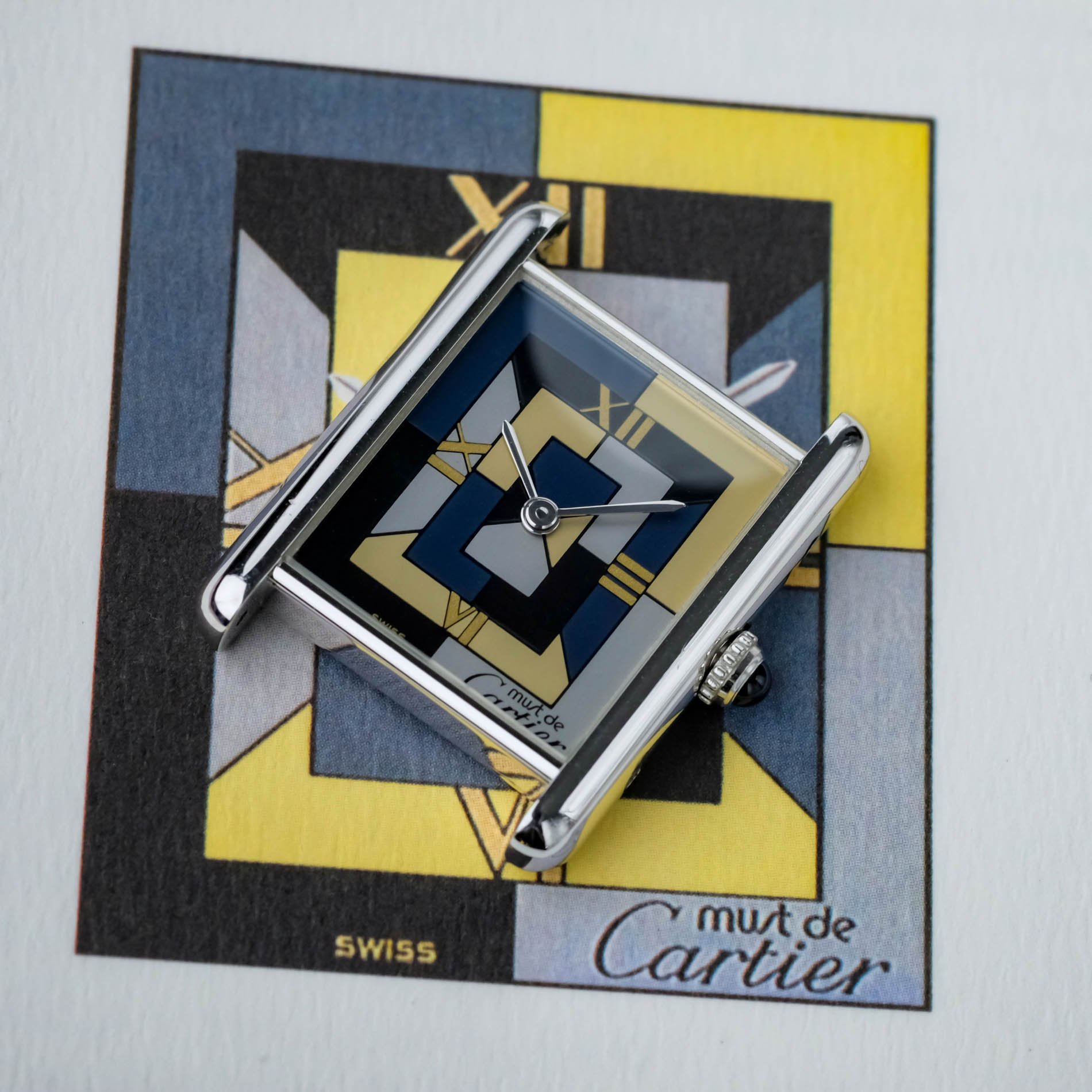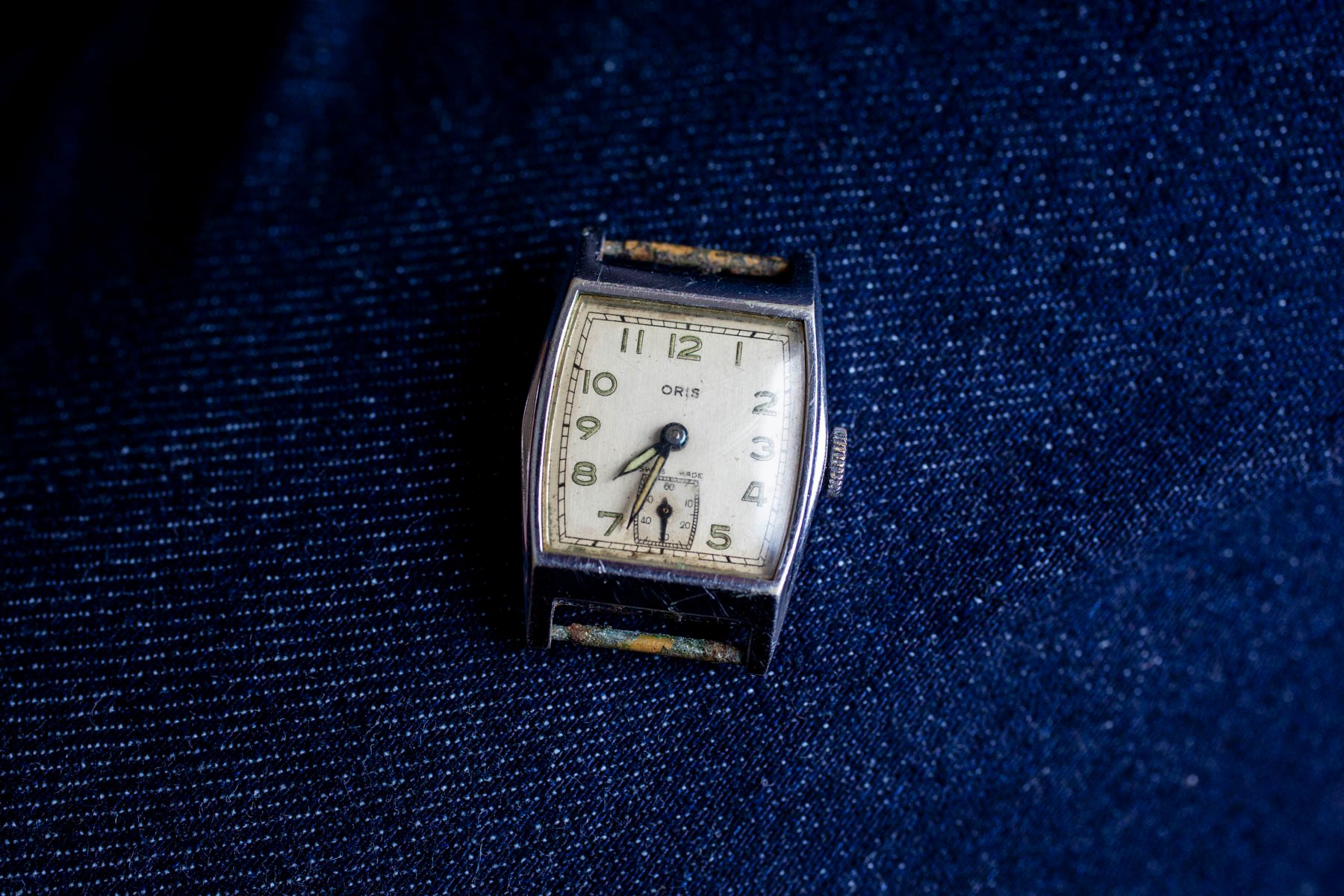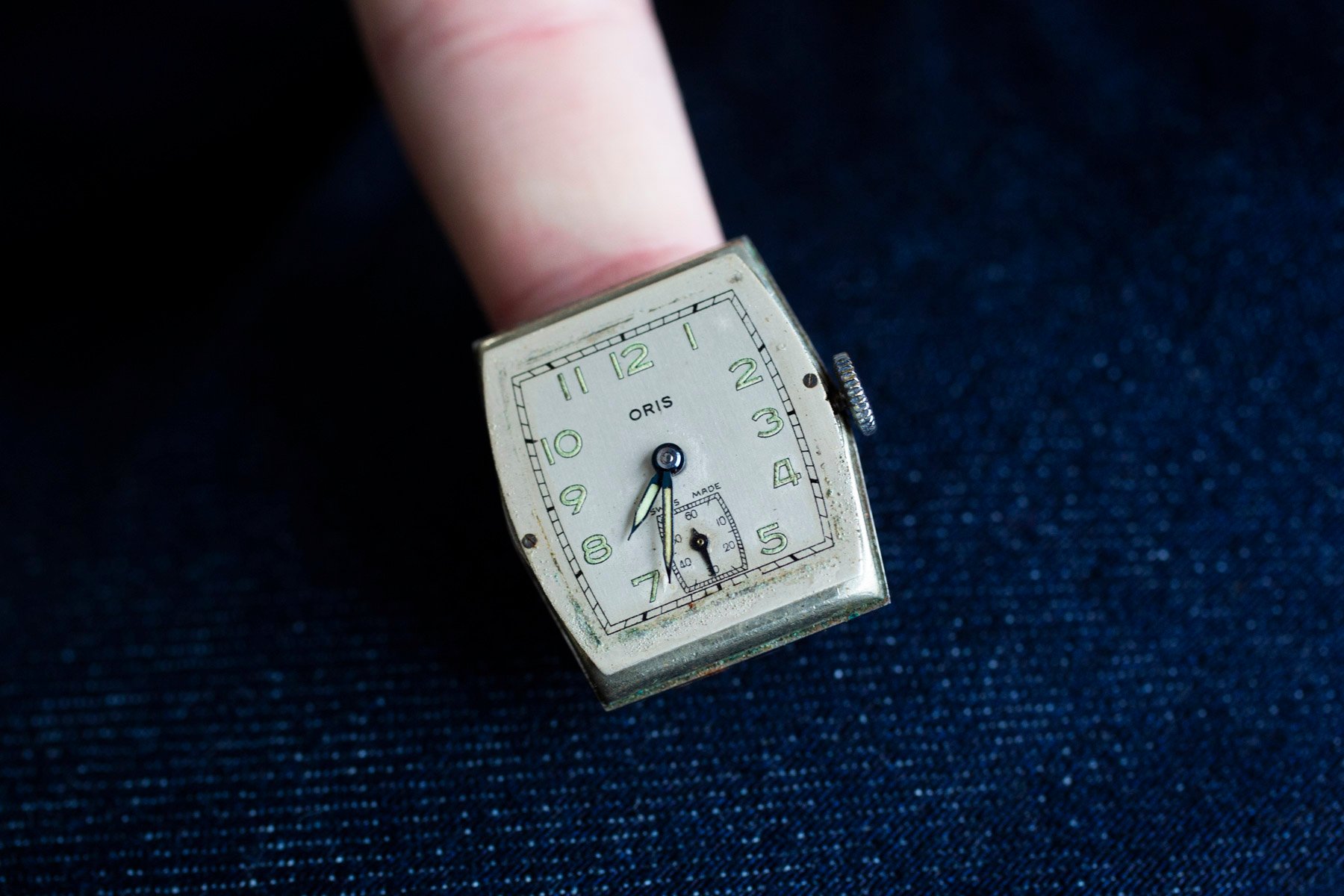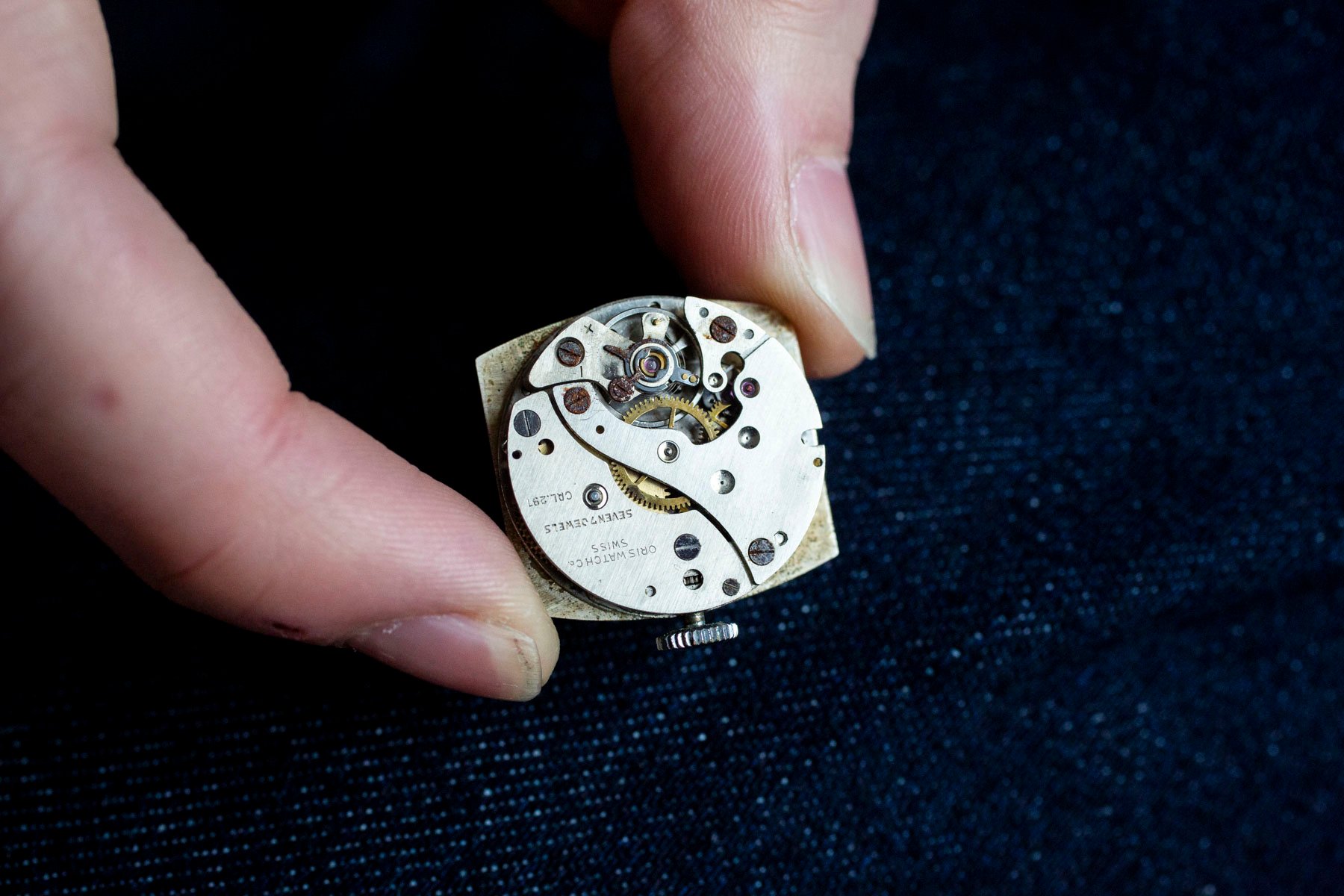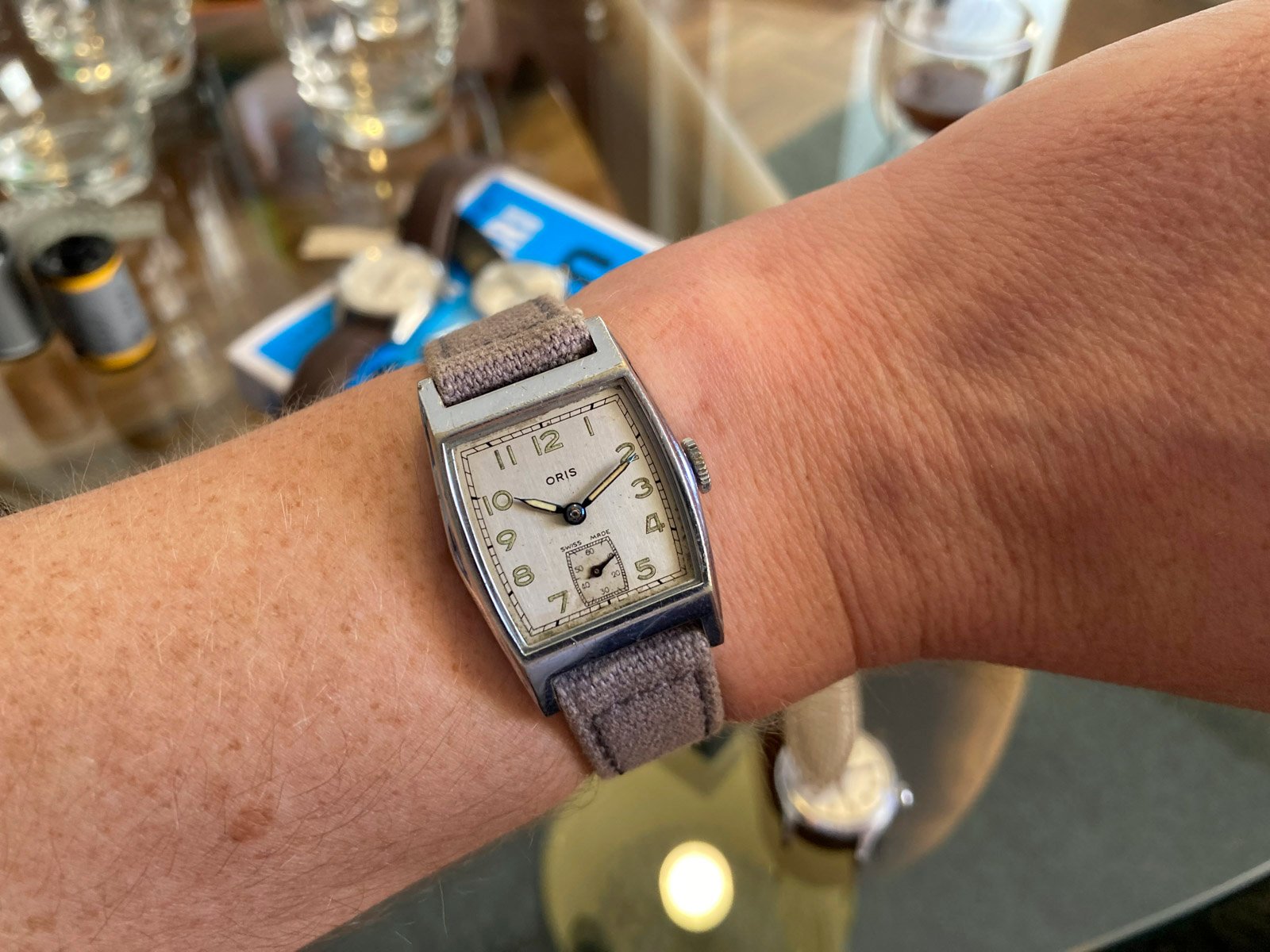Treasure Hunting: Finding An Old Art Deco Oris Watch In A Suitcase
The allure of searching vintage and antique shops is strong for me. There is something about the appreciation for things from the past that resonates. Recently, on a trip to one such shop, I discovered a vintage Oris watch in an old suitcase.
I saw it glistening inside the morass of trinkets and discarded objects — the unmistakable gleam of the flank of a tiny watch pockmarked with grime and a little surface rust. It was a sunny Australian afternoon, and I was at an antique shop in Sydney with my friend Jack. We had been there looking at some Art Deco furniture for his apartment. The shop sold mostly items discarded by the wealthy residents of Sydney’s upmarket areas. This was where its eastern suburbs met the Pacific seaboard.
“One man or woman’s rubbish is another’s treasure,” I thought as we entered the store. An array of old paintings, chairs, tables, and even a vintage train set greeted us. What also greeted us was an unmistakable musty smell, the dust of another era floating in the air. I’m always keeping one eye peeled for a vintage watch in these scenarios. Inspired by my colleague Tomas and his #TBT series, finding a vintage watch is at the back of my mind.
An appreciation for old objects
After close to half an hour looking through old objects (and almost bumping into a hundred-year-old walking cane hanging off the ceiling), I was about to head out the door when I saw an old suitcase by the exit. You would not have thought much of it if you had seen it. Dilapidated by years of humidity and disregard, it was an object that had been ignored for the last couple of decades, at the very least. Somehow curious about this object’s abandonment, I opted to peek inside. A mini mountain of trinkets and an old, damp smell greeted me as soon as I looked within. “Nope, you don’t need a ball of string,” my friend Jack told me dryly as I started to look through the suitcase. “You don’t need that old bottle opener either.”
Vintage and antique shopping is a bit of an underground hobby here in Australia. The “op-shop” (short for “opportunity shop”) is a common occurrence in every small Australian town. The only thing you are likely to find besides a country bakery selling meat pies and sausage rolls in the middle of nowhere is an op-shop. Our Australian readers will understand this well.
The Australian op-shop
Sydney, however, is crammed with op-shops. They go by different names, mainly associated with large charities like the Red Cross or “Vinnies” (short for the Society of Saint Vincent de Paul). Unfortunately, the culture around op-shops is changing here in Australia. Increasingly, they are being seen as trendy places. In some cases, you will even find objects for sale with an asking price higher than the same object new!
On this particular day, we were at a small independent op-shop in an upmarket suburb known for its old money. It seems these well-heeled suburbs are full of people who just don’t seem to appreciate the wonderful, old items in their homes. Perhaps it’s the grandmother’s Singer sewing machine or the grandfather’s Smiths wristwatch.
A vintage Oris watch
The gleaming object in the suitcase was a watch. Quite excited, I turned it over to find that it was an old Oris. The rectangular case was marked with small grime and rust spots, and the spring bars looked rather gross from age and wear. But the dial was in good condition, and the hands were a beautiful blued affair in direct sunlight.
The numerals were handsome, with a font quite Art Deco in its aesthetic. Indeed, the flat-topped 4 and the fat 9 made for a highly attractive dial. I pulled the Oris watch out of the suitcase and took it to the man behind the counter in the shop. The watch was not running, and the strap it once came on had long expired. But 55 Aussie dollars later, I was walking out of the op-shop with the Oris watch in my pocket and a grin on my face.
My friend Jack also had some success with this old suitcase and found a 1960s Enicar at the very bottom. We each left this op-shop with a non-running vintage watch and a new project to get the two repaired, serviced, and running again.
Admiring an old Oris watch
Upon arriving home, we started to take the Oris apart (or at least out of its case). After that, we cleaned the Plexi, which had yellowed with age, and then we cleaned the grime and rust spots off the case. Turning the watch on its face, we saw that the screws in the caliber were rusty too. We needed to put in some effort to get the Oris working correctly again.
The movement inside this Oris, by the way, is caliber 297. Smaller Oris watches from around the 1940s feature a seven-jewel hand-wound movement inside them. From what I can tell, this was a common Oris movement for watches of this era.
Concluding thoughts
Taking on this old Oris watch is a responsibility I take seriously. Having had the luck of finding such a nice-looking old timepiece, the next objective is getting it running again. When I fix this watch, I will share an update with you all. I am quite grateful and feel lucky to have come across such a pretty old watch.
What about you, Fratelli? I would love to read about your experiences of coming across vintage watches at a flea market, op-shop, or in a random old suitcase or drawer! Tell me if you have ever had a similar experience and whether you managed to get that old watch running again. Let me know in the comments!

